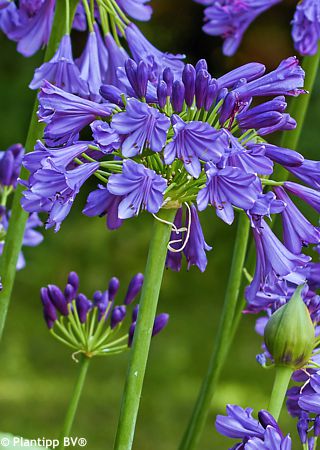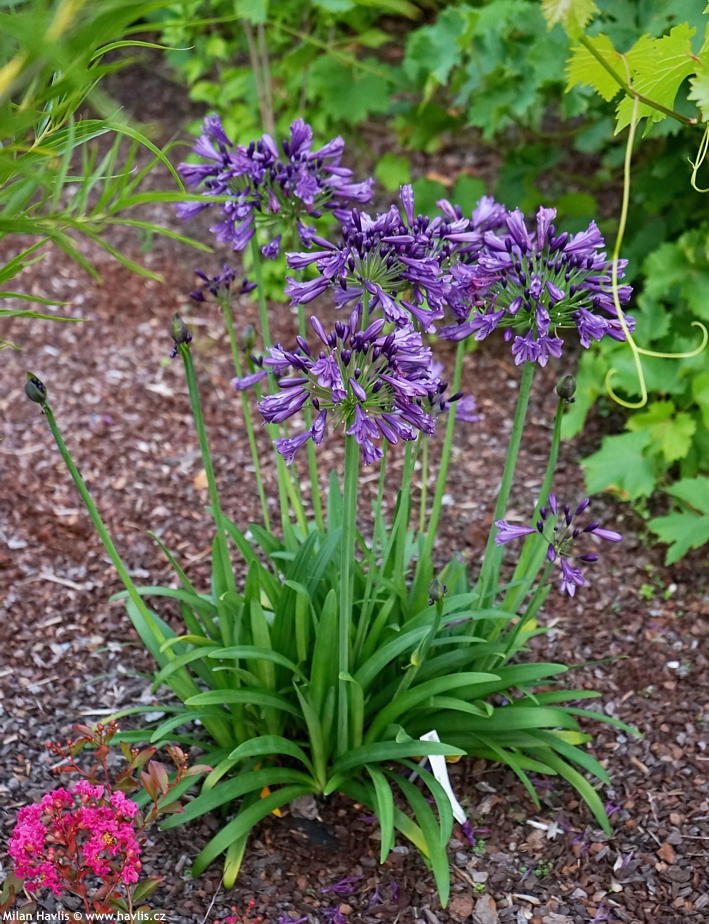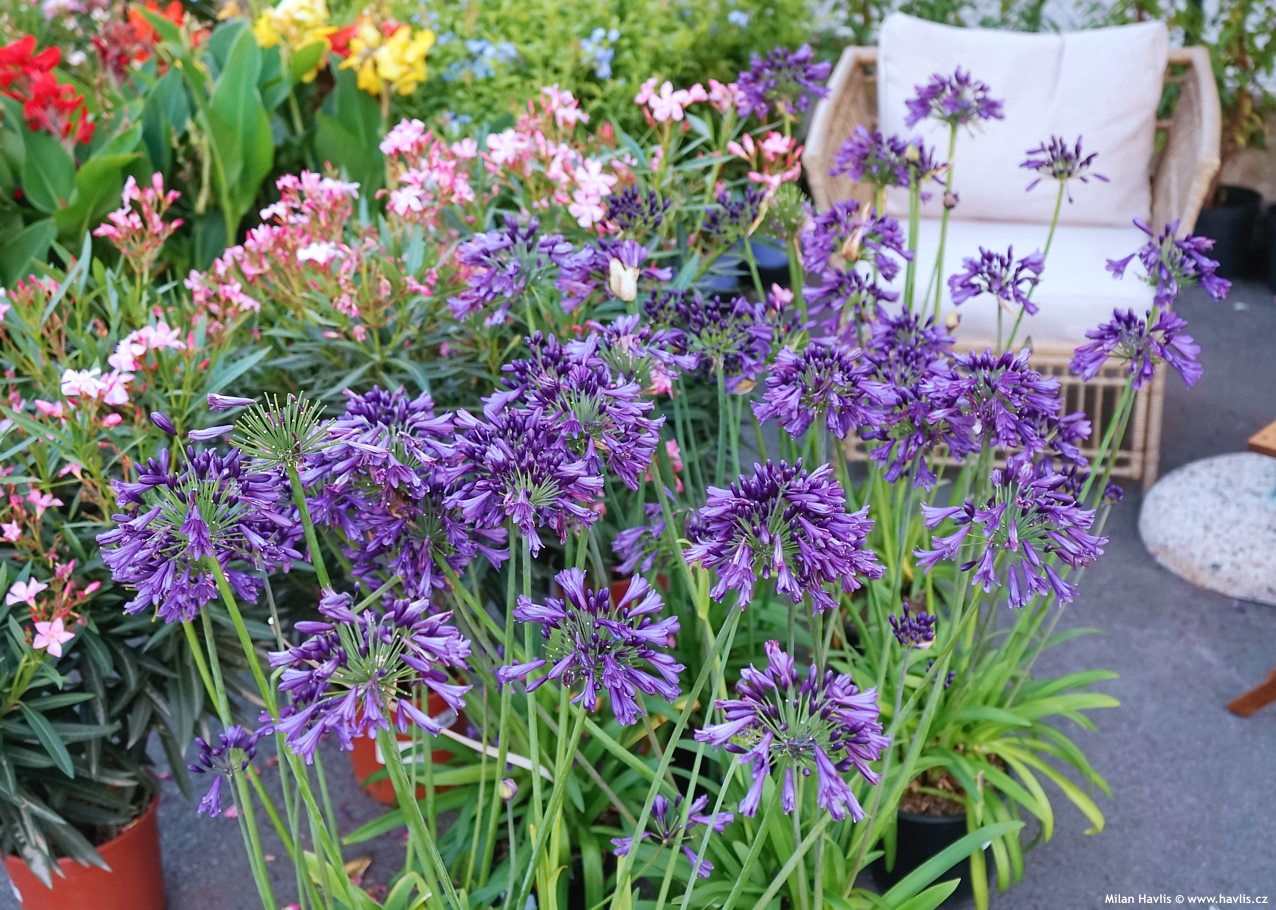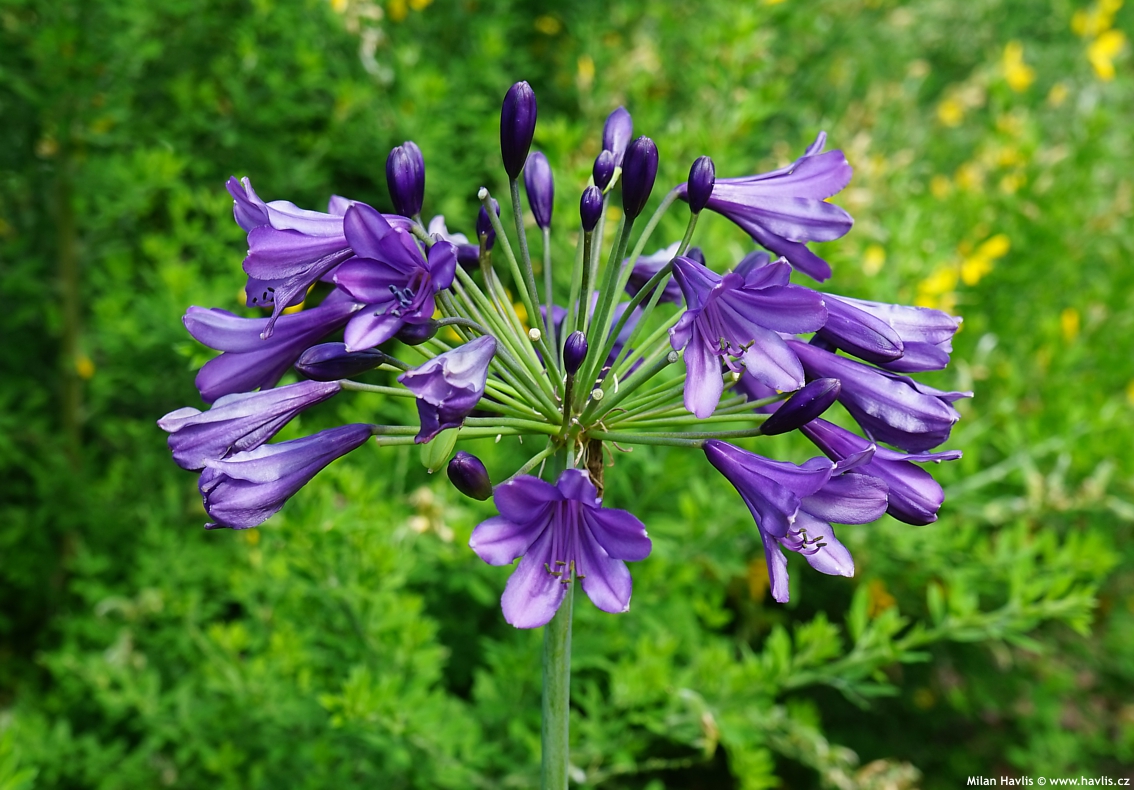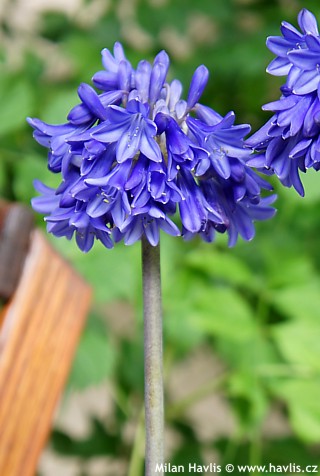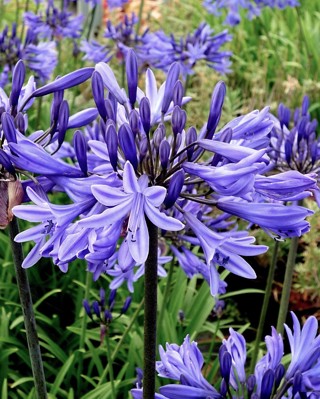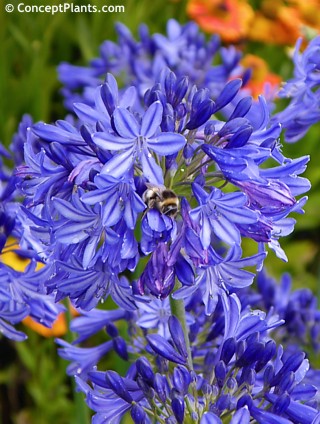Agapanthus 'PM003' EVERPANTHUS POPPIN' PURPLE African blue lily
Agapanthus
African blue lily is one of the most attractive summer plants. Even though this perennial comes from South Africa where less hardy species are grown, new varieties and hybrids are bred all over the world, especially warmer climates such as South USA, Australia, South Africa, and also U.K. where an important group called Headbourne Hybrids was raised. It has become so popular that many other new varieties are said to belong there though, honestly, they have nothing to do with it. Quinton Bean is a South African breeder of perennials from De Wet Plant Breeders who also breeds this plant and put together an attractive series called EVERPANTHUS®.
EVERPANTHUS® POPPIN’ PURPLE is a special variety of hardy African blue lily with purple blue (not sky blue) flowers. Individual flowers are funnel-shaped, composed in large umbels, and open one by one thus extending the flowering period of one stem to almost 3 weeks. Thanks to reliable repeat blooming new flower buds are formed continuously during summer. Stems are about 60 cm tall and strong. Strap-like leaves are about 2-3 cm wide, mid green, deciduous.
POPPIN’ PURPLE was awarded Novelty of the Year 2020 at IPM and Silver Medal KVBC Spring Challenge 2020. European patent No. EU 60010 was granted in 2022.
Grow it in fertile, very well-drained soil. In too wet or boggy soil it will most certainly die. The plants benefit from regular watering and fertilizing from spring until late summer. Though, once established it perfectly withstands drought and heat. In the Mediterranean it belongs to the top favourite summer blooming plants. In our gardens it will be a perfect flowering feature along pathways, at swimming pools, and near patios where you spend most of your relaxing time in summer.
So far it has withstood winter temperatures down to -21 °C (USDA zone 6b). All winter protection it needs is heavy mulching. In too cold areas you can double the mulch pile and cover it with a waterproof shelter to keep it from soaking with water and rotting afterwards. Such protection will ensure surviving low minus twenties centigrade. At the end of winter, after danger of severe frosts remove the waterproof cover and half of mulch, and in spring when the temperature gets warmer remove the rest of the mulch and cut off all leaves so that the plant can begin new growth.
Last update 11-06-2022

































